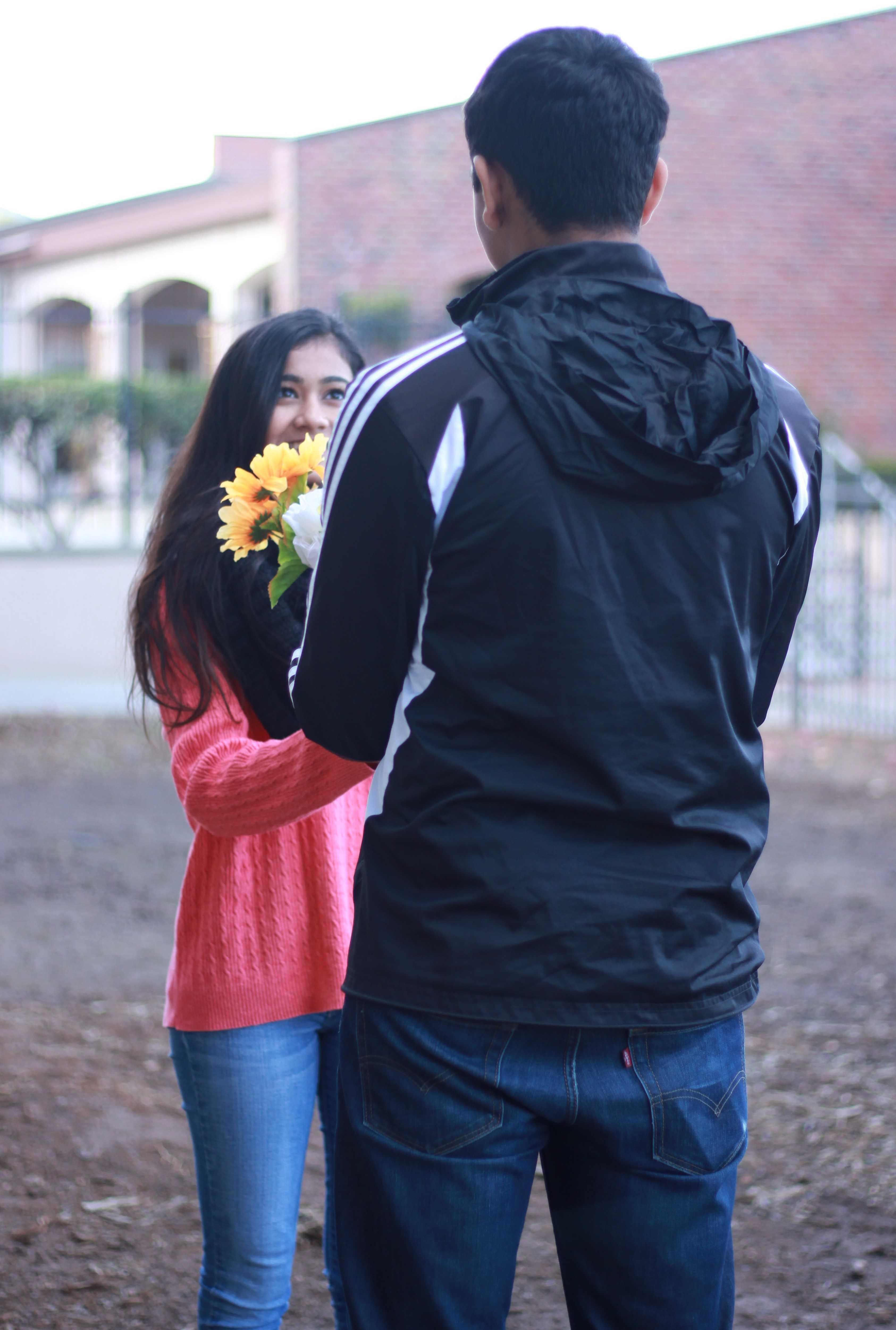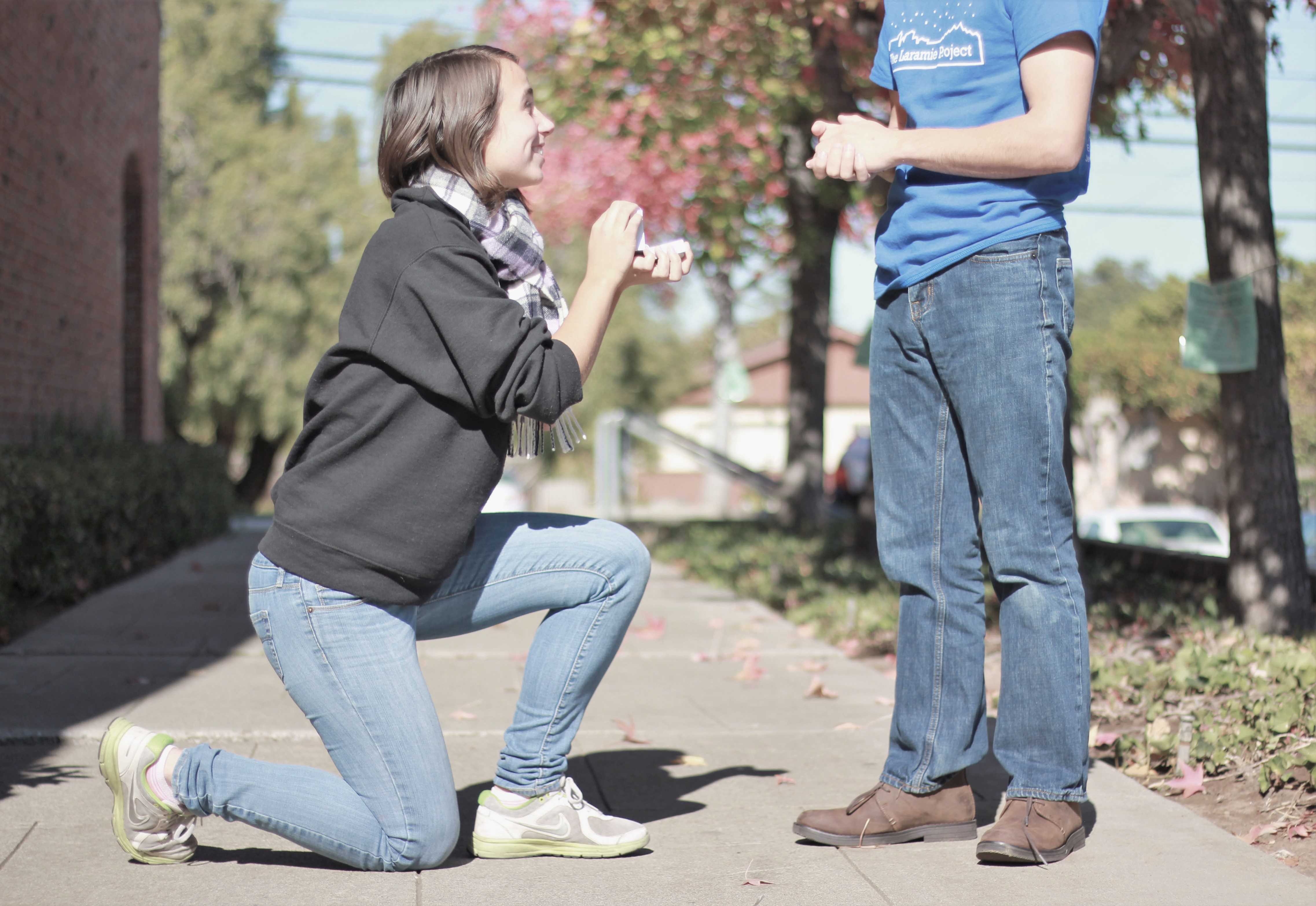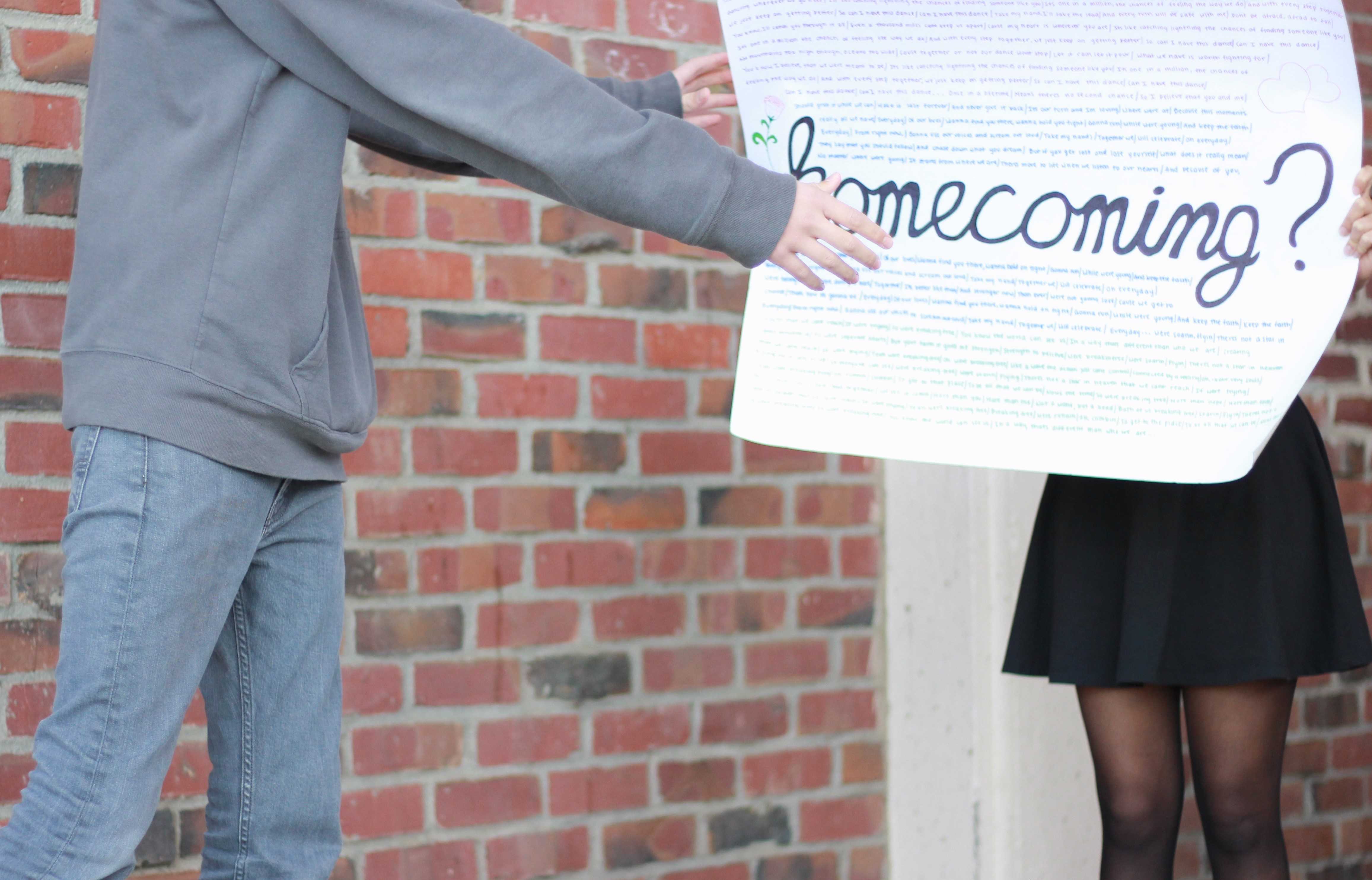he still had yet to hear a response. Freshman year. Senior Mallory Strom could hear her pulse race as she waited. She was the one who asked her boyfriend out, and stood shaking waiting for his response. To this day, she doesn’t know how he reacted to her question because her nervousness blinded her to everything but the answer.
“Why does she have to ask him?” To Senior Vidhi Tibrewala, this is the mentality of the average student to a dance asking initiated by a girl. Even she, an avid feminist who almost asked one of her friends to a dance, can’t help but think these thoughts when she sees that kind of asking.
As girls awkwardly fumble posters in their hands, they wait to ask a potential date to the only dance of the year where the majority of people that ask are girls: Sadie Hawkins. A tradition first started in 1934, this dance has become a controversial topic in discussions. Although MVHS stopped holding the dance two years ago, Sadie Hawkins remains a common dance around the community.
Strom notes that creating a separate dance for girls to ask boys not only enforces the idea that the norm is for boys to ask girls to dances, but also alienates non-binary genders and same-gender couples from feeling involved.
“I’m sad that there needs to be a specific event where girls have to ask guys,” Tibrewala said. “That’s just kind of inherently weird to me.”
However, the dance also has its own upsides. According to Tibrewala, it allows for an atmosphere in which girls can ask the person of their choosing to a dance without breaking traditions. Sophomore Jadon Bienz sees this dance as the opportunity to encourage the uncommon.
 In eighth grade, a girl approached Bienz and asked him to a dance, an offer he accepted. He sees nothing out of the ordinary about girls asking someone of their choosing to the dance. But not everybody sees this in the same light.
In eighth grade, a girl approached Bienz and asked him to a dance, an offer he accepted. He sees nothing out of the ordinary about girls asking someone of their choosing to the dance. But not everybody sees this in the same light.
“I don’t think it’s awkward [for a girl to ask somebody to a dance] but I think society will definitely be judgmental in the sense that she had to ask him,” Tibrewala said. “He didn’t ask her.”
Tibrewala thinks that askings initiated by girls are looked down upon by others because students think that the girl was forced to be the one to ask because the boy wouldn’t ask her. Strom thinks that the biggest problem is the fact that peoples’ reactions to these askings are different than reactions to the typical male asking female.
“That’s where I think the issue is, not in the day-to-day actions, but in the mindset,” Strom said. “We think in a way that still promotes how it used to be. We’re almost surprised when it doesn’t happen in the traditional form of courtship.”
Tibrewala was going to ask someone to a dance until complications arose during MVHS. Her reason was simple — she really cared about the person and wanted to make them feel special with the really cool asking and the posters. She views asking as showing someone how you care for them by making them feel special through planning something really genuine from her heart. Not a culture where boys have to do a majority of the work.
As a young child, Bienz remembers hearing the traditional ideas of how boys ask girls. Traditionally, men are supposed to pay for the date, be the care-taker and manage the relationship by being the stronger one. However, as gender equality becomes more prominent in the world, Tibrewala says that girls need to catch these gender differences of society and break the traditions once held.
“I observe it a lot with the males around here. They’re like, ‘Oh, you should go ask this person out,’” Bienz said. “So there is some sort of pressure for someone to ask someone out for someone to be accepted in the sense that they’re worthy because someone else said yes to them.”
Bienz says that the subtle external pressure that boys place on each other to ask somebody to a dance still persists even as times change.
“No female exactly fits the female gender roles and no male exactly fits the male gender roles,” Strom said. “When you try to force that one very specific view of the world onto a relationship between two actual humans, it doesn’t work out and you don’t get as wonderful a relationship.”








